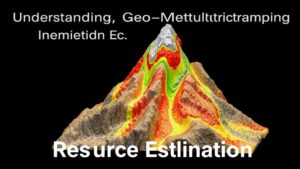Techniques for Processing Ore in Remote and Rugged Locations
Techniques for Processing Ore in Remote and Rugged Locations
Mining in remote and rugged locations presents unique challenges that require innovative techniques in ore processing. Factors such as accessibility, environmental impact, and resource management are critical in determining the success of mining operations. This article explores the methods employed in these challenging environments, highlighting real-world applications and best practices.
Challenges of Ore Processing in Remote Areas
Ore processing in remote locations is complicated by several challenges:
- Logistics: Transporting equipment and personnel to isolated sites can be both time-consuming and costly.
- Environmental Conditions: Extreme weather and rugged terrain often hinder operational efficiency.
- Resource Availability: Limited access to water and energy resources restricts processing capabilities.
- Regulatory Concerns: Compliance with environmental regulations can be more complex in sensitive ecosystems.
Innovative Processing Techniques
In response to these challenges, several processing techniques have been developed and refined specifically for use in remote areas.
Modular Processing Plants
Modular processing plants offer flexibility and efficiency for remote ore processing. e plants are prefabricated sections that can be transported easily to site and assembled rapidly. For example, the use of modular plants in small-scale mining operations in Alaska showcases their benefits, reducing setup time and initial capital costs while ensuring high mobility in response to changing ore grades.
Direct Shipping Ore (DSO)
Direct Shipping Ore is an approach where high-grade ores are extracted and shipped directly to customers without extensive processing. This technique significantly reduces processing costs and minimizes the environmental footprint. An example of this method is found in the iron ore mines of Western Australia where DSO has been successfully implemented, allowing for quicker access to market and reduced operational complexity.
Heap Leaching
Heap leaching is particularly useful for precious metals like gold and copper. This process involves stacking ore in heaps and applying a leaching solution to extract metals. Notable implementations of heap leaching can be observed in the remote sites of Nevada, where the barren landscape provides little operational disruption. process allows for gradual extraction, thus lowering upfront capital costs while effectively utilizing local resources.
Utilization of Local Resources
Maximizing local resources is key to sustainable mining operations. This strategy includes:
- Water Recycling: Useing systems for recycling water used in processing can alleviate the burden on local water supplies.
- Renewable Energy Sources: Solar and wind energy are increasingly being utilized to power mining operations, decreasing reliance on diesel generators.
Real-World Case Studies
Several mining organizations exemplify effective ore processing techniques tailored for remote locations. A case study of Barrick Gold’s North Mara mine in Tanzania highlights the integration of modular processing units and renewable energy sources. By adopting these strategies, Barrick has managed to enhance operational efficiency and reduce environmental impact significantly.
Conclusion and Actionable Takeaways
Processing ore in remote and rugged locations necessitates a combination of innovative techniques and efficient resource management. The adoption of modular processing plants, heap leaching, and the utilization of local resources facilitate the sustainability of operations while improving profitability. Mining entities are encouraged to research and implement these techniques based on their specific operational contexts to maximize both environmental and economic outcomes.
